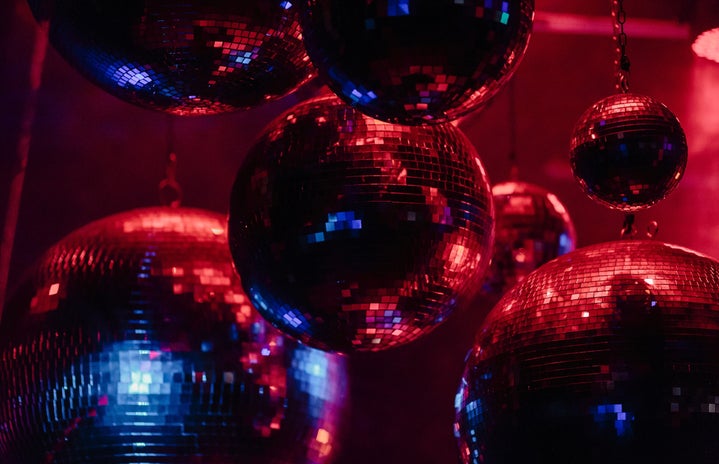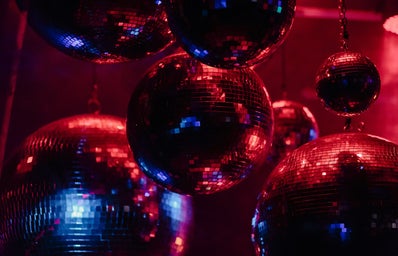Picture the following event: , the beginning of a new decade, the 1980s. Alongside it came an unsettling event; the proclamation that disco died by a hateful few. But did it ever really end? Here’s a look back at the evolution of disco music and how it continues to have an impact on the industry today.
The History
Disco music is an upbeat dance genre that peaked in popularity in the late 1970s. The word originated from discotheque, meaning “library of phonograph records” in French. Invented by a myriad of subcultures in underground clubs in the late 1960s, it contains elements of the melodic rhythmic pulse of Philadelphia’s R&B and soul, choppy syncopation of funk, and the upbeat style of Motown, the exciting nature of pop and the polyrhythm Latin American salsa. It was initially appreciated as a space to express freedom and liberation for marginalized groups like LGBTQ+, Black and Latino people.
It’s important to highlight the city DJ, David Mancuso, who had a pivotal role in its growth. He opened The Loft, a member’s only club in New York City, that served as a place away from the fear of judgment and repression. Other noteworthy DJs that assisted in the genre’s growth were Nicky Siano, Shep Pettibone, Larry Levan and Walter Gibson. Reaching momentum in the celebrated discotheques, like Studio 54 and Paradise Garage, the nightlife became a place for escape from the rising social and economic issues of the era, like war, political scandal, gang violence, unemployment, soaring crime, race riots and homophobia.
The Legends
Beginning with the late 1960s and early 1970s, emerging elements of disco were introduced by artists like The Supremes, Stevie Wonder, The Jackson 5, and Eddie Kendricks. Underground discotheque clubs and parties would play hits like “Love Train” by O’Jays and “Love’s Theme” by the Love Unlimited Orchestra conducted by Barry White. Likewise, iconic variety shows such as Soul Train assisted in opening the doors for many disco artists to display their talents.
In the mid-1970s, around 1974 to 1976, disco music became mainstream. The artists of these years were the headliners and created memorable music. Here we see iconic songs like “Kung Fu Fighting” by Carl Douglas, “The Hustle” by Van McCoy, “Lady Marmalade” by Labelle, “Fernando” by ABBA, and “Love to Love You Baby” by Donna Summer, among others. Disco was at its prime and it was inescapable.
The late 1970s were impacted by the movie Saturday Night Fever with its iconic Bee Gees album. Around this time, we find the most noteworthy Disco songs like the mega-hits “I Will Survive” by Gloria Gaynor, “Funky Town” by Lipps Inc, “Ring My Bell” by Anita Ward, “Le Freak” by Chic, “YMCA” by Village People, “Last Dance & Hot Stuff” by Donna Summer, “September” by Earth, Wind & Fire, and “Don’t Stop Til You Get Enough” by Michael Jackson. Highlighting a few of the prominent disco artists, we can appreciate Donna Summer, Gloria Gaynor, Diana Ross, Chic, Earth, Wind & Fire, Kool & the Gang, The Bee Gees, and ABBA.
A Dark Moment in History
By the late 1970s, there was an oversaturation of the genre and the music was impacted by an unwarranted and embarrassingly hateful moment. In 1979, the anti-disco sentiment was on full display when Chicago deejay Steve Dahl held the “Disco Demolition Night” during a White Sox game. People were urged to bring their old disco records as Dahl destroyed them in an explosion. The vehemently racist and homophobic event that later cost Dahl’s job at the radio station, cemented a shift in the music industry. Thus, the declaration that “Disco sucks” was born and a decline of this musical style began. Akin to the Nazi book burning that showcased a fear for change and resistance to embrace diversity, this event expressed the bigotry of ignorant people desperate to control the narrative. The AIDS/HIV epidemic also contributed to its dip in popularity.
The Influence & Legacy
Nevertheless, the impact of disco music could not be truly destroyed. It just transformed into what we listen to today. Disco was still alive by the early 1980s with hits like “Super Freak” by Rick James, “I’m So Excited” by the Pointer Sisters, “Celebration” by Kool & the Gang, and “Let’s Groove” by Earth, Wind & Fire.
Despite its decline, new genres flourished from its predecessor, like house, techno, and eurodance. In the 1990s and 2000s, a resurgence of the genre occurred. Songs like “Murder on the Dancefloor” by Sophie Ellis-Bextor, “Groove Is In The Heart” by Deee-Lite’s, and “Can’t Get You Out of My Head” by Kylie Minogue, Madonna’s album Confessions on a Dance Floor, “Get Lucky” by Daft Punk ft. Pharrell Williams and Nile Rodgers, “Treasure” by Bruno Mars, and “Can’t Feel My Face” by the Weeknd used disco elements fused with other genres.
It’s important to note how the entertainment industry, specifically TV shows and movies, incorporated disco music into their soundtracks (I’m looking at you, Guardians of the Galaxy and Rush Hour).
Nowadays, we see entire albums like Future Nostalgia by Dua Lipa, Chromatica by Lady Gaga, and the recent An Evening with Silk Sonic by Bruno Mars, and Anderson Paak keeping the Disco party alive. Songs like “Say So” by Doja Cat, “Say Something” by Kylie Minogue, and “Dynamite” by BTS illustrate why Disco music is so catchy and fun to feature.
So, is disco dead? Certainly not. In these COVID-19 pandemic times, disco music, roller skating, and roller discos became an escape from many of life’s worries and woes. Its influential beats, rhythmic sound, octave-jumping bass and swooping violins fused with other genres continues to get listeners everywhere to groove and dance the night away.
References:
https://www.theatlantic.com/culture/archive/2020/12/how-disco-defined-
2020/61747/https://www.capesymphony.org/blog-news/blog/218-where-did-disco-come-from
https://socialdance.stanford.edu/Syllabi/disco_lifestyle.htm
https://www.masterclass.com/articles/disco-history-and-influence#quiz-0


